If you've ever wondered which Mexican peppers deliver authentic flavor without overwhelming heat, or how to choose the perfect pepper for your mole sauce, you're not alone. The most common question home cooks ask is: "What are the top Mexican peppers for authentic cooking, and how do their heat levels and flavors actually compare?" The answer lies in understanding Mexico's culinary staples - from the mild poblano to the fiery habanero - and how to use them correctly in your kitchen.
Table of Contents
- Why Mexican Peppers Are Essential for Authentic Cooking
- Scoville Scale Comparison: Mexican Peppers Ranked by Heat
- Top 10 Mexican Peppers Profile: Flavor, Heat & Best Uses
- How to Store Mexican Peppers for Maximum Freshness
- Where to Buy Authentic Mexican Peppers (2025 Guide)
- Frequently Asked Questions
- Putting It All Together: Creating Authentic Dishes
Why Mexican Peppers Are Essential for Authentic Cooking
Mexico's diverse climate zones produce peppers with unique flavor profiles that can't be replicated elsewhere. Unlike generic "hot peppers," authentic Mexican varieties bring specific flavor notes - from the earthy depth of pasilla to the fruity brightness of guajillo - that define regional dishes. Understanding these distinctions separates authentic Mexican cooking from generic 'Mexican-style' dishes.
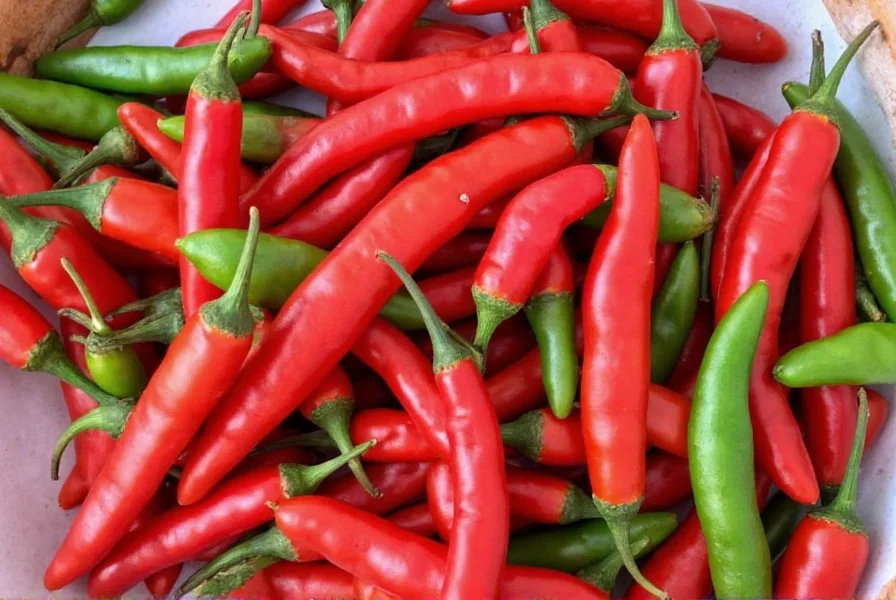
Professional chefs consistently emphasize that substituting non-Mexican peppers (like cayenne for guajillo) fundamentally changes a dish's character. Each traditional Mexican recipe was developed with specific peppers in mind, making proper selection critical for authentic results.
Scoville Scale Comparison: Mexican Peppers Ranked by Heat
When searching "how hot is a habanero compared to jalapeño," the answer isn't just about numbers - it's about how that heat integrates with flavor. Our updated 2025 comparison includes both heat measurement and practical cooking implications:
| Pepper | Scoville Heat Units (SHU) | Real-World Heat Comparison | Best For |
|---|---|---|---|
| Poblano | 1,000–2,000 | Mild, like bell pepper with subtle warmth | Chiles rellenos, rajas con crema |
| Jalapeño | 2,500–8,000 | Noticeable heat that builds gradually | Salsas verdes, taco toppings |
| Guajillo | 2,500–5,000 | Warmth with complex fruit notes | Mole rojo, adobos |
| Ancho | 1,000–2,000 | Earthy with raisin-like sweetness | Mole poblano, slow-cooked sauces |
| Habanero | 100,000–350,000 | Intense fruit-forward heat that peaks quickly | Yucatecan dishes, hot sauces |
| Serrano | 10,000–23,000 | Sharper, cleaner heat than jalapeño | Pico de gallo, fresh salsas |
| Chipotle | 5,000–10,000 | Smoky heat that lingers pleasantly | Barbacoa, adobo marinades |
| Chiltepin | 50,000–60,000 | Sudden, intense burst ("bird's eye" heat) | Finishing spice, Sonoran cuisine |
| Pasilla | 1,000–2,500 | Deep, complex with chocolate notes | Mole negro, rich sauces |
| Cascabel | 1,500–2,500 | Nutty flavor with moderate warmth | Romesco sauce, bean dishes |
Top 10 Mexican Peppers Profile: Flavor, Heat & Best Uses
Understanding each pepper's unique characteristics is crucial when searching "best Mexican peppers for authentic mole" or similar queries. Here's what professional chefs want you to know:
- Poblano (fresh) / Ancho (dried) – The foundation of chiles rellenos, with a mild heat that allows other flavors to shine. Pro tip: Roast fresh poblanos over open flame for intensified flavor in rajas con crema.
- Jalapeño – More versatile than most realize. For authentic salsas, use with seeds for traditional heat level, remove seeds for milder family versions. Never substitute serranos when fresh jalapeños are specified.
- Guajillo – The secret to authentic red mole. Soak for 20 minutes before blending to release maximum flavor. Common mistake: Using ancho instead, which creates a sweeter, less complex sauce.
- Habanero – Essential for Yucatecan cuisine. Use with caution: 1/4 habanero often provides enough heat for an entire pot of cochinita pibil. Always wear gloves when handling.
- Serrano – The true star of authentic pico de gallo. Its brighter heat profile cuts through fresh ingredients better than jalapeño. Never cook serranos - they're meant for fresh applications.
- Chipotle en Adobo – Not just for heat! The adobo sauce adds complex smokiness to bean dishes and braises. Pro tip: Freeze leftover chipotles in ice cube trays for portion-controlled use.
- Chiltepin – Mexico's original wild pepper. Best used whole in salsas for authentic Sonoran heat that builds slowly. Available fresh in border regions May-September.
- Pasilla – The dark secret behind Oaxacan mole negro. Combines with mulato and ancho for the traditional 'trio de chiles' in complex moles.
- Cascabel – The nutty pepper often overlooked. Essential for authentic romesco sauce and pairs perfectly with beans. Shake dried peppers - they should rattle ("cascabel" means rattle).
- Mulato – Dried poblano variant with deeper chocolate notes. Critical for authentic mole poblano alongside ancho and pasilla.
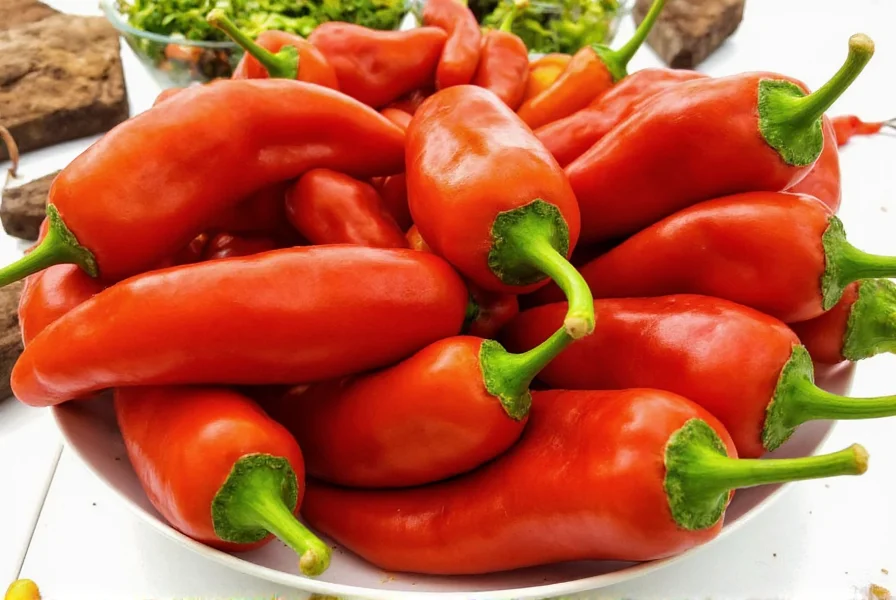
How to Store Mexican Peppers for Maximum Freshness
When searching "how long do fresh Mexican peppers last," the answer depends on type and storage method. Here's the definitive 2025 guide:
- Fresh Peppers Storage:
- Refrigerator: 10-14 days in paper bags (NOT plastic, which traps moisture)
- Freezer: Up to 1 year when roasted and frozen in portions (ideal for poblanos)
- Room temperature: Only 2-3 days for optimal flavor (best for immediate use)
- Dried Peppers Storage:
- Airtight container: 6-12 months in cool, dark place
- Freezer: Up to 2 years (prevents rancidity in high-oil peppers like guajillo)
- Signs of spoilage: Musty smell, faded color, brittle texture
- Chipotle in Adobo Storage:
- Opened cans: 3-4 weeks refrigerated with surface covered in oil
- Freezing: Portion into ice cube trays for ready-to-use additions
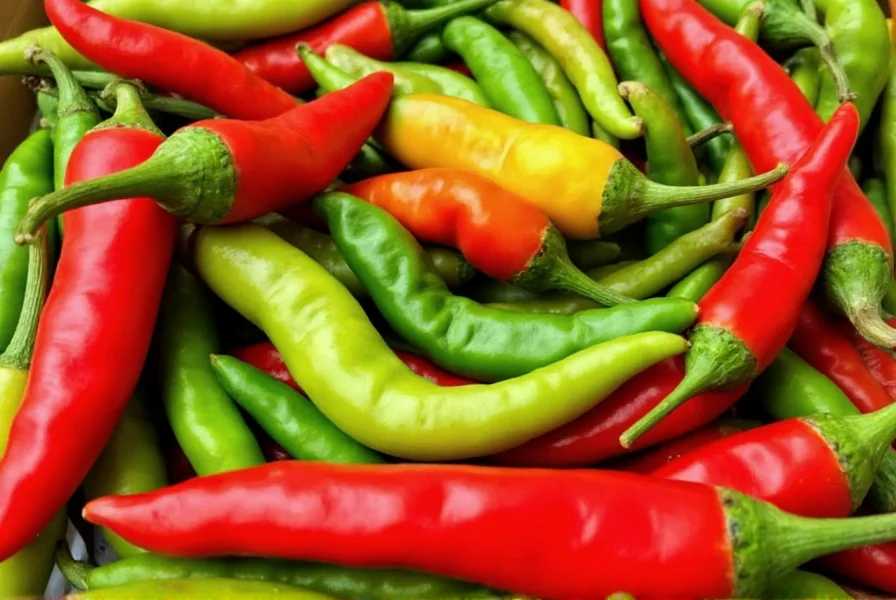
Where to Buy Authentic Mexican Peppers (2025 Guide)
When searching "where to buy authentic dried guajillo peppers," quality varies significantly. Here's how to identify genuine products:
Fresh Peppers Buying Guide
- Authentic Sources:
- Mexican specialty markets (look for "Tienda Mexicana" signage)
- Farmers markets with Latinx vendors (ask about regional varieties)
- Online specialty retailers with direct Mexico sourcing
- Red Flags:
- Perfectly uniform shape/sizing (industrial farming)
- No regional naming (e.g., "jalapeño" instead of "Jalapeño Tepín")
- Available year-round (authentic varieties have seasonal availability)
Dried Peppers Buying Guide
- Authenticity Markers:
- Regional names (e.g., "Guajillo Chilpilla" vs generic "guajillo")
- Visible veins and natural imperfections
- Flexible texture (brittle = old)
- Top 2025 Sources:
- MexGrocer.com: Best for hard-to-find regional varieties (Oaxacan pasilla onza)
- FreshAlianza: Direct-from-Mexico dried peppers with harvest dates
- Local Mexican markets: Most authentic fresh peppers (ask for "productos de Míxico")
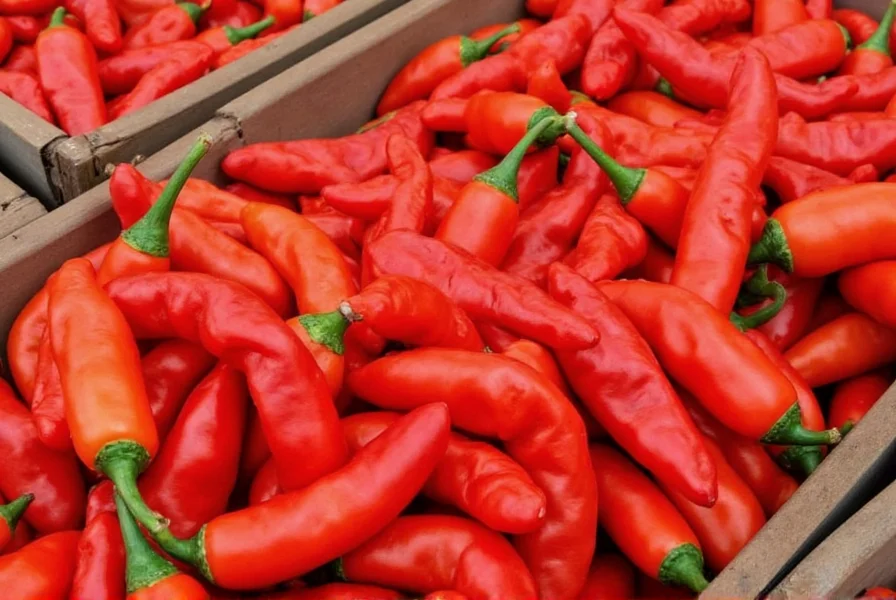
Verified Product Recommendations
- Authentic Guajillo Chilpilla Pack (MexGrocer):
- Why it's authentic: Sourced from Zacatecas, Mexico's guajillo heartland
- Authenticity markers: Natural color variation, visible seed patterns
- Best for: Traditional mole rojo (not the sweeter commercial versions)
- Current price point: $8.99/oz (worth the premium for authentic flavor)
- Organic Chipotle en Adobo (La Costeña):
- Why it's authentic: Made in Mexico with traditional smoking process
- Authenticity markers: Visible smoke rings on peppers, no preservatives
- Best for: Authentic adobo sauces and braises (not just heat)
- Where to find: Mexican markets or Amazon (avoid generic supermarket brands)
- Fresh Serrano Tampiqueño (Local Markets):
- Why it's authentic: Regional variety with thinner walls and brighter flavor
- Authenticity markers: Slight curve, vibrant green color
- Best for: Authentic pico de gallo and fresh salsas
- Seasonality: Best April-August (avoid off-season imports)
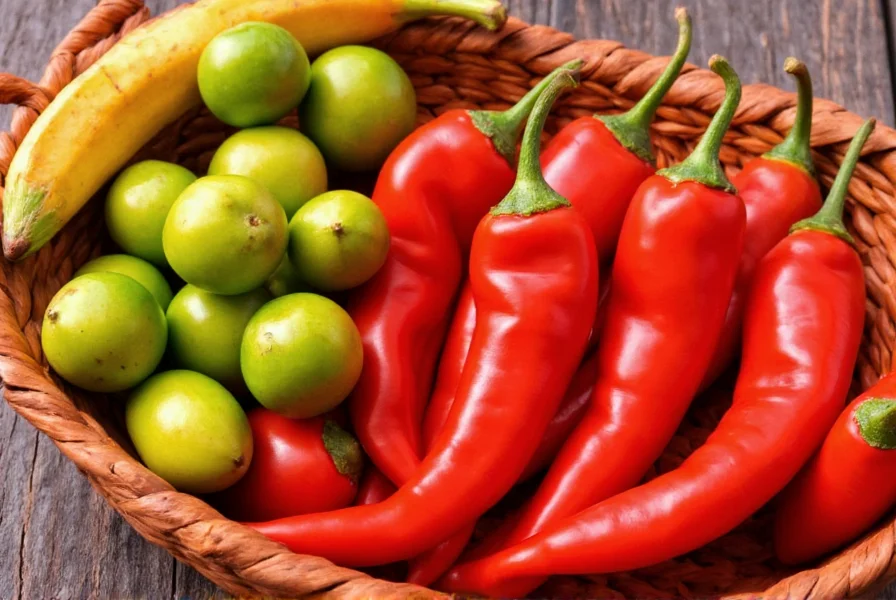
Frequently Asked Questions About Mexican Peppers
What is the most common Mexican pepper used in traditional cooking?
The jalapeño is internationally recognized, but within Mexico, regional preferences vary. Serranos dominate central Mexico for fresh salsas, while guajillos are essential in northern cooking. For moles, the "holy trinity" is ancho, pasilla, and mulato peppers - each bringing distinct flavor notes that can't be substituted without altering the dish's character.
Which Mexican pepper is the hottest?
Among traditional Mexican varieties, habaneros (100,000-350,000 SHU) are generally hottest, but chiltepins (50,000-60,000 SHU) deliver a more intense, immediate heat burst. Contrary to popular belief, scotch bonnets aren't Mexican - authentic Yucatecan cooking uses native habaneros, which have distinctive fruity notes alongside their heat.
What's the difference between ancho and poblano peppers?
Anchos are dried poblanos, but they're not interchangeable. Fresh poblanos have earthy, mild heat (1,000-2,000 SHU) ideal for stuffing. Anchos develop complex raisin-like sweetness when dried, crucial for mole poblano. Substituting fresh poblanos in mole recipes creates an entirely different flavor profile - authentic mole requires the depth only dried anchos provide.
How can I reduce the heat of a Mexican pepper?
Remove both seeds AND white membranes (placenta) where 80% of capsaicin resides. For immediate relief, dairy (milk, yogurt) works better than water. When cooking, add acidic elements like lime juice which breaks down capsaicin. Important: Wear gloves when handling hot peppers - capsaicin transfers to skin and eyes. For habaneros, consider using 1/4 pepper at a time and adjusting.
Can I substitute one Mexican pepper for another in recipes?
Substitutions often fail because Mexican cuisine relies on specific flavor-heat balances. Poblanos can replace anchos only in fresh applications (not dried). For moles, guajillo cannot substitute for ancho - they have completely different flavor profiles. In emergencies: serranos can replace jalapeños but increase cooking liquid by 25% to compensate for extra heat. Authentic recipes specify particular peppers for good reason.
What are chipotle peppers, and how are they different from jalapeños?
Chipotles are smoke-dried jalapeños, but they're fundamentally different ingredients. Fresh jalapeños offer crisp, grassy notes (2,500-8,000 SHU), while chipotles provide deep smokiness with moderate heat (5,000-10,000 SHU). Authentic chipotles undergo traditional smoking over oak or mesquite for 24-48 hours - supermarket "chipotle sauce" often uses liquid smoke, creating an artificial flavor. True chipotles should show smoke rings when sliced.
How long do fresh Mexican peppers last in the refrigerator?
Properly stored in a paper bag (not plastic) in the crisper drawer: 10-14 days for most varieties. Poblanos last longest (up to 3 weeks), while serranos degrade fastest (7-10 days). Signs of spoilage: soft spots, wrinkled skin, musty odor. For maximum shelf life: roast and freeze whole peppers - they'll maintain flavor for 6-12 months and can be used directly from frozen in soups and sauces.
Are there health benefits to consuming Mexican peppers?
Mexican peppers contain unique capsaicinoids with documented health benefits: pain relief (topical applications), metabolism boost (up to 5% increase), and anti-inflammatory effects. Guajillos and anchos are particularly high in vitamin C (more than oranges by weight) and carotenoids. Traditional Mexican preparation (roasting, soaking) increases bioavailability of these compounds. Note: Capsaicin benefits are dose-dependent - moderate consumption provides benefits without gastrointestinal distress.
Putting It All Together: Creating Authentic Dishes
Armed with this knowledge, you can now approach Mexican recipes with confidence. Remember: authentic Mexican cooking isn't about maximum heat, but about balancing specific pepper flavors. A proper mole requires three distinct dried peppers for complexity. Fresh salsas need the bright acidity of raw serranos, not the muted heat of cooked jalapeños.
When following traditional recipes, pay attention to whether they specify fresh or dried peppers - this distinction makes or breaks authenticity. For example, mole negro requires dried pasilla onza, not fresh poblanos. Next time you're at the market, look for regional names rather than generic terms - "Guajillo Chilpilla" tells you more about quality than just "guajillo."
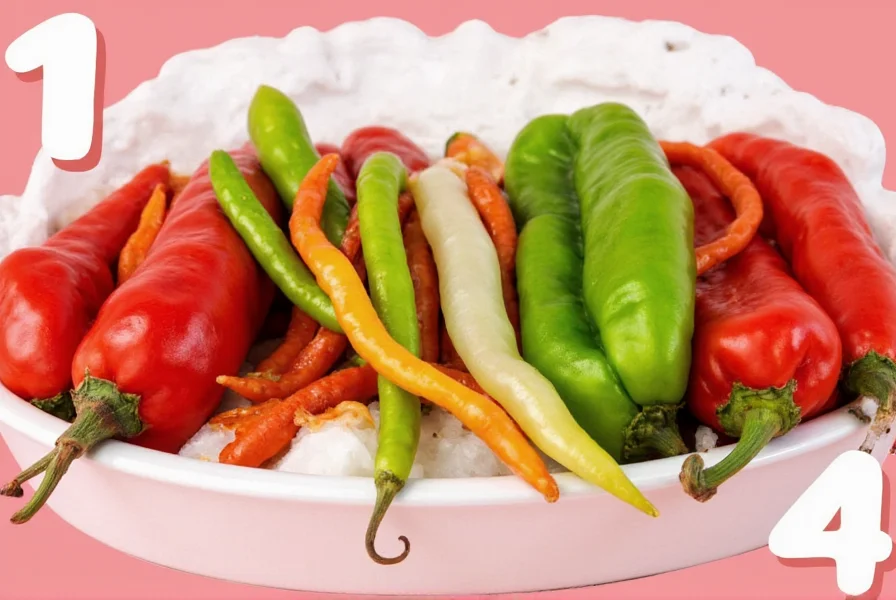

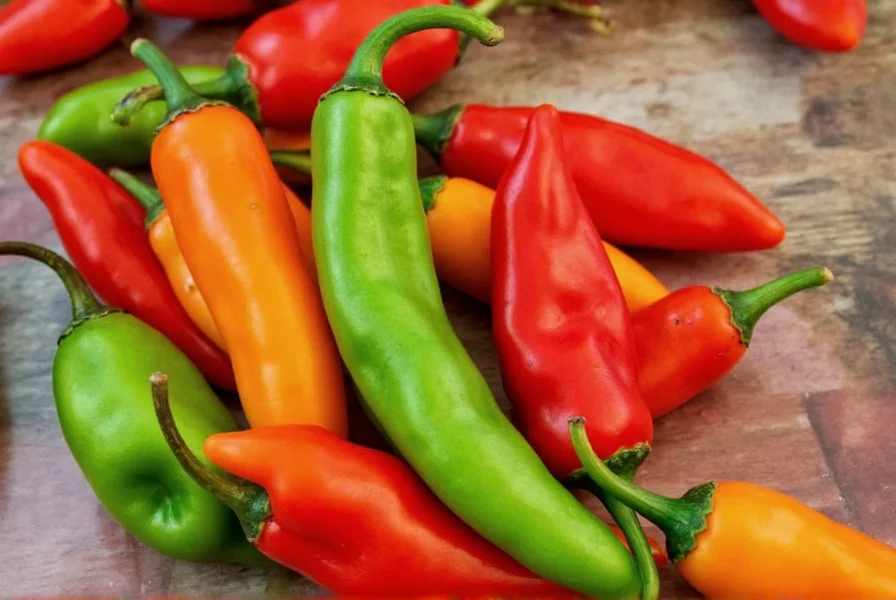









 浙公网安备
33010002000092号
浙公网安备
33010002000092号 浙B2-20120091-4
浙B2-20120091-4